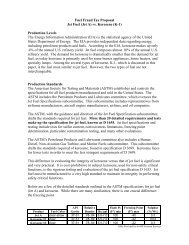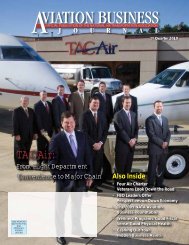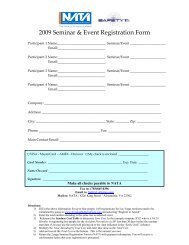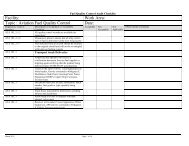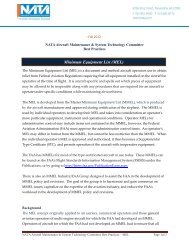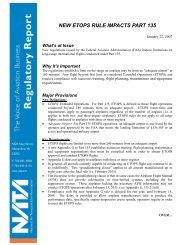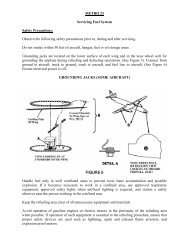Bridgeford Flying Services: A Vintage Napa Valley FBO You ... - NATA
Bridgeford Flying Services: A Vintage Napa Valley FBO You ... - NATA
Bridgeford Flying Services: A Vintage Napa Valley FBO You ... - NATA
You also want an ePaper? Increase the reach of your titles
YUMPU automatically turns print PDFs into web optimized ePapers that Google loves.
Lessons Learned...<br />
Insurance Traps to Avoid<br />
Sure to raise the hackles of some insurance brokers, Jim Strang approaches<br />
the insurance game from a unique perspective.<br />
Jim Strang is a rare bird of a sort. He’s an insurance<br />
consultant (“Run, run for your life!”), but<br />
as such he plays the role of a buyer’s agent for<br />
aviation insurance and is perhaps the only one<br />
doing so full time.<br />
While buyer’s agents in the real estate industry<br />
are not uncommon, Strang said that, in the aviation<br />
industry at least, he’s about it. He audits the<br />
insurance portfolios of aviation companies with an<br />
eye to reducing costs or improving coverages or<br />
both. He claims to reduce premiums 80 - 90 percent<br />
of the time and to improve coverages almost all of<br />
the time. He pulls those rabbits out of his hat via<br />
40+ years of experience in the insurance and risk<br />
management fields, and Aviation Business Journal<br />
thought it might be interesting to share some of the<br />
lessons learned from that experience for the benefit<br />
of <strong>NATA</strong> members.<br />
ABJ: Isn’t the broker supposed to look out for the interest of the<br />
insured?<br />
“Well, they say they do. But, it wasn’t too long ago<br />
that brokers in New York were fined, one up to<br />
$850 million for not putting the interests of their<br />
clients first. All had to sign a declaration stating<br />
that going forward any transaction would be<br />
transparent to the client and disclose any brokerage<br />
and fees. Clients have to review and sign that<br />
declaration in advance. “<br />
ABJ: Who then truly plays the role of the advocate for the insured?<br />
“Nobody, most of the time. All large corporations<br />
have risk management staffs. Smaller to midsize<br />
companies just can’t afford it, so they rely on the<br />
brokers. There are a lot of things they do very well,<br />
but the position of the brokers needs to be put into<br />
perspective. They’re paid by the insurance underwriters.<br />
They don’t make any money unless they<br />
sell insurance.<br />
Somebody who performs risk management is<br />
paid by the client. They are there to find ways to<br />
protect the owner or the client and not necessarily<br />
spend money. And depending on the size of the<br />
<strong>FBO</strong>, management company, or charter operator,<br />
they might be able to negotiate a fee for the broker’s<br />
services.”<br />
ABJ: For a small or midsize company, though, draw a distinction<br />
between a risk manager and an insurance broker. Are they different<br />
people; are they the same people?<br />
“At small or midsized companies, it could vary all<br />
over the lot, from somebody in accounting who<br />
looks after insurance--who pays the bills but really<br />
doesn’t understand insurance--to somebody who<br />
has a sophisticated background and is truly able to<br />
bring about change and help the organization.<br />
“Risk managers work with the clients from the<br />
inside out. They learn the whole operation, review<br />
Continued on page 36<br />
Aviation Business Journal | 2 nd Quarter 2008<br />
35



